Text
Spec-by-Spec: What are the Differences between RED’s New WEAPON 8K and EPIC-W 8K Cameras?
RED has seen fit to release not one, but two new 8K cameras to the market – the already expected Weapon 8K and a new arrival, the Epic-W.
There are many similarities between the two cameras. Both sport RED’s new Super 35mm Helium sensor, are housed within RED’s new DSMC2 body design and can record Apple ProRes or Avid DNxHD/HR proxies.
One aspect that isn’t similar however, is the price. The Epic-W is available at a cheaper price point of £24,045, whereas the Weapon is a hefty £40,345 (all prices excluding VAT). That’s a price difference of £16,300.
So what are the differences between the two, very similar-looking 8K beasts?
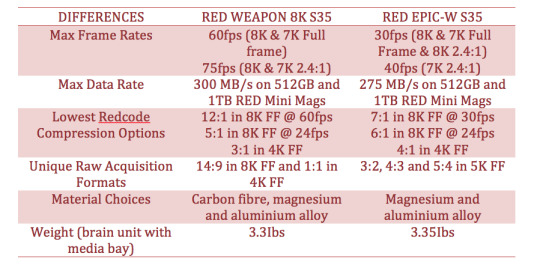
This table focuses solely on the differences between the two cameras. Other values, such as the maximum frame rate in other resolutions, are identical no matter which camera you buy.
So there are a few differences in performance between the two cameras, although whether or not the £16K price difference warrants these differences depends on the user’s needs. One thing is for sure – both cameras are extremely impressive…
0 notes
Text
Shoot HD in Aaaaaanamorphic Widescream Horror!
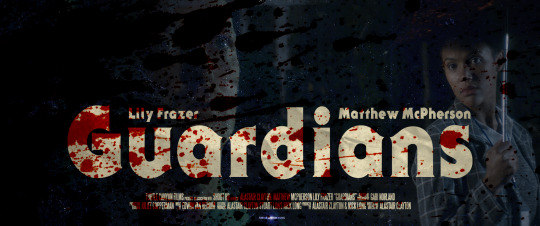
Shoot HD recently survived a blood-curdling night on location in an abandoned school with Turtle Canyon Films, shooting their new short horror film Guardians; a proof of concept and prologue to the forthcoming full-length feature film Reunion. In addition to the camera, grip and lighting kit, Shoot HD supplied crew including 2nd assistant camera Joe Foster and sound recordist Robert Momber.
With the aim of replicating the look and feel of 70s and 80s horror movies, DOP Gabi Norland shot the film in 2.35:1 anamorphic using a vintage Cooke Varotal 36-200mm T4.5 zoom lens. The wide range on this not only covered all the required shot angles but allowed the retro horror technique of zooming in shot. This was paired with an ARRI ALEXA Mini 4:3 camera, chosen for its filmic image representation, compact form factor for versatility with hand-held and skater dolly shots, and straightforward ProRes digital workflow.

When Director Alastair Clayton popped into the office, we put him on the other side of the camera and asked about the decision to shoot anamorphic:
“It just looks like a movie. It gives you all the stuff we know about like the bokeh, the lens flair, the slight dodginess of the glass.
When we did a test with that particular lens it was just so problematic in the best possible way. The top and bottom were really dirty and kind of grungey. You get lots of little shifts in colour and it just looks vintage”.
The full interview can be seen below.
Equipment: ARRI ALEXA Mini 4:3, Cooke Varotal 36-200mm T4.2 zoom lens, cmotion compact ONE wireless LCS, O’Connor 2575D fluid head, P+S Technik Skater Dolly.
vimeo
0 notes
Text
Recording 4K ProRes Proxy Files from a Sony PMW-F55

As 4K production continues its growth, the need for monitoring in 4K on set or recording 4K proxy files is becoming more common. Cameras shoot in a variety of proprietary codecs but the popularity of Apple’s ProRes workflow in post-production and a lack of time and resources for transcoding 4K footage has led to a demand for 4K ProRes proxies. Sony has released the additional CBK-55PD ProRes and DNxHD codec board for the PMW-F55, but this only produces 1080 HD files.
The PMW-F55 is able to send out a 4K SDI signal via use of all four of its 3G-SDI monitor outputs on BNC connectors, however, the same can be achieved with a single cable using the HDMI output. The preferred solution at Shoot HD is to combine the F55 with a Convergent Design Odyssey 7Q+ monitor/recorder via HDMI, which allows recording of 4K/UHD ProRes 422 files (10-bit) up to 60fps to its solid state drives. The recorder’s 7.7” OLED display is also a very accurate monitor for use on-board the camera or off-board by the director, doubling as a playback device.

Specific camera settings are required for the 7Q+ to pick up the F55′s signal, so ensure the following is set:
PMW-F55 SETTINGS
SYSTEM MENU
Base Setting > YPbPr
Imager Scan Mode > Normal
Rec Format > XAVC 4096 × 2160P or XAVC 3840 × 2160P
VIDEO MENU
Output On/Off > HDMI > On
Output Format > SDI (Main) > 4096 × 2160 YPbPr 2-SI or 3840 × 2160 YPbPr 2-SI
Output Format > HDMI > 4096 × 2160 or 3840 × 2160
ODYSSEY 7Q+ SETTINGS
CAMERA > SONY
MONITOR->RECORD > 4K/UHD PRORES (.MOV)
VIDEO CODEC > PRORES (HQ, 422 or LT)
0 notes
Text
The Gifs Have Landed
Recently we have put together some GIFs (or Graphics Interchange Format for the technical) for some of our most popular cameras. We have found it tricky to really put across the uniqueness of our specially designed flight cases, other than someone seeing them in person of course. This is especially true for the C300 which contains the camera mostly built with 15mm bars, monitor and top handle.
We thought that this was a fun and interesting way to show how your camera is packaged when its shipped out to you Using a canon 5D MK III with a 24-70 L series zoom lens and a simple flexible LED lighting setup, we pieced together bits of kit in the box one after the other, and then used photoshop to construct the final GIF.
The results are pretty cool, and is just a little bit different.
(We would have used the slogan “think different”, but some techie fruit company already used that one...)

0 notes
Text
Specializing in Despecializing
The Industry is generally thought of as being forward thinking and forward moving. Technology moves at such a rapid speed that most can barely keep up, and although there are some who refuse to move in new directions (see the little known Digital vs. Film debate, which you have probably heard of), technology generally moves forward, and the industry mostly follows (not quite like a pied piper, but not too far off either). Despite this, there is a rather unique example of new technology being used to move backwards. I recently came across an ongoing project, known as Star Wars: The Despecialized Edition. Surprisingly, this is not another home release by Lucas’ empire to capitalize on the wallets of hungry fans. Instead it’s an attempt to utilize modern technology to create a cut of the original films that’s as close to the original theatrical releases as humanly possible – or to “Despecialize” the loathed Special Editions. Its taken a lot of man-hours and several versions, and the (sort of) final results are impressive to say the least.

The Story So Far….
Since I’ve now listened to my family and friends and realized that not everyone is a Star Wars nut like me, there might very well be some confusion as to why such a project exists, why it matters to a great deal of people and why these are not official releases.
Let me start at the beginning for the uninitiated. George Lucas’ popular space opera has actually been a source of controversy to its fans, and they have not been the happiest folks around, despite having the ability to watch the films as much as they like and having brilliant replica lighsabers available to buy.
Lucas started the process of restoring and updating his much loved space saga at great expense in the mid nineties (it is estimated to have cost about $15 million to complete the project - $10 million of which was just on the first film) and released them in 1997 for the 20th Anniversary of the original release. These reworked films were dubbed “The Star Wars Trilogy Special Edition” and fans have been reeling ever since. There are technically three special editions that exist for home release, with new fan agitating changes and alterations. These are the 1997 original release, the 2004 first DVD and the 2011 Blu-Ray (I could go into greater detail about the differences between these and the various VHS and laserdisc releases, but there would be a risk of a severe intergalactic headache).
George Lucas and his team have produced version after version, alterations after alterations and new editions after new editions of the original Star Wars trilogy. Many have these changes have driven fans bonkers, and sent them crying artistic and historical blasphemy. The changes were numerous; some were subtle (lighting and colour palate alterations, retimed sequences) but some were glaring and stuck out like computer generated sore thumb (extra aliens and creatures filling the foreground and background, updated spaceship sequences, and the controversial “Han shot first” debacle). There is a CGI sequence here, a replaced audio there, and even blinking Ewoks (not as an adjective before a noun, they actually do blink in the Blu Ray releases). The reasons for the various alterations have been numerous, from “artistic reasons” to Lucas being unsatisfied with certain special effect sequences that were troublesome to create in the 70’s and 80’s. Even a deleted scene from the first Star Wars movie involving the villainous crime lord Jabba the Hut that was abandoned for budget, logistical and technological reasons was restored, completed and added to the new cut.
For decades, fans have been craving the holy grail of Star Wars home releases – the original, unaltered editions of the original Star Wars trilogy as it was shown in theatres, special effect warts and all, as they originally experienced it. Petitions, forums, documentaries and websites have been created purely for that dream. Unfortunately Lucas has been adamant about not releasing or even considering such a product. In a 2004 interview he stated, “It’s like this is the movie I wanted it to be, and I’m sorry if you saw half a completed film and fell in love with it, but I want it to be the way I want it to be.” His reluctance to release such a version has sparked debates on artist vs. audience ownership, and even a refusal by Lucas to submit the Oscar-winning original to National Film Registry for preservation.
Some fans got tired of the Lucas Empire not adhering to such demands, and so the fan community of originaltrilogy.com started working on a version of their very own…
The Rebels Strike Back
And so these disgruntled fans created the “Despecialized Editions”. Unofficially headed by Czech Republic Star Wars devotee Petr Harmáček (more widely known as “Harmy”), various technical sources were utilized to create the closest approximation to the original theatrical trilogy possible. The main source is the 2011 Blu-Ray home release (which itself comes from the 2004 DVD masters, albeit with extra blinking Ewoks amongst other changes), and this rebel alliance of devotees used various other sources to rotoscope old effects, restore matte paintings and use as colour correction references (the newer versions were criticized for being a little too far on the magenta side, and problems with crushed blacks in the darker areas).

They used the best-known copies of the original versions. One of these was the “GOUT” (George’s Original Unaltered Trilogy) version. This was an attempt by Lucasfilm in 2006 to silence the demands and complaints and release the original versions on DVD; however the “original” source was from a 1993 laserdisc master and had a number of issues. These include a lower quality picture (including faded or washed out colours and contrast), aliasing, obvious digital noise removal that caused ghosting effects, and a non-anamorphic presentation. Despite these problems, it is one of the best quality versions of the original trilogy officially available, and was one of the main sources of the project. Other sources include an original HDTV broadcast, an anamorphic SD digital broadcast master tape and even film sources – including an Italian 16mm print and a grainy LPP 35mm print - which was analyzed with a homemade film scanner. Various elements from these different sources were either constructed into a single picture, or whole up-scaled shots were added to the final cut. All of these elements combined into a single seamless edit

The following link highlights these rebellious fan’s intentions and the processes they used with examples -https://www.youtube.com/watch?v=QXifjbxZDAM. It’s a really fascinating glimpse into technology being used in a slightly different way to the norm, and it’s quite lovely to see how devoted some people can be to cinematic history and art. Its also incredibly impressive how they were able to achieve their goals using a variety of less-than ideal sources. What’s even more remarkable is the fact that this didn’t cost anywhere close to the $15 million Lucas spent.
A Different Kind of Clone
Star Wars is not the only sci-fi franchise with a passionate following to receive an upgrade. Back in 2006, Paramount had announced that they were working to upgrade and remaster the original (and much beloved) sixties series of Star Trek for everyone’s (then) shiny new HD televisions. Based on the negativity surrounding the CGI tinkering of the original Star Wars movies from before, hardcore Trekies/Trekers were understandable weary and skeptical. Even fan favourite Leonard Nimoy was highly critical of the idea.
Then a funny thing happened when the shows were broadcast, the geek/nerd community was mostly silent. There was no fan protesting, no websites dedicated to hating the changes or petitions drawn up to have them removed. Some even praised the newer versions – even Mr Nimoy changed his mind when he saw them for the first time. I had always found it curious why such passionate and dedicated fans had accepted one remaster, but not another. Both are just as passionate as the other (I count myself as both), so why was there no war declared or rebel alliance formed?

I now believe there are three answers to this question. The first is subtlety. The CGI effects are a few polishes here, a few colour corrections there, and some enhancements of matte paintings. There are no random CGI characters running across the screen or making silly noises. The second is respect. Even the more glaring changes (such as the exterior ship shots) are done in an oddly sixties style. You almost believe that if that same technology was available at that time, this is what it would have looked like. The designs of the ships weren’t changed; they still seem to move in a similar fashion to their model counterparts – only far cleaner looking and in lovely HD. There is a sense that the more subtle corrections were done out of respect, rather than a disdain for the originals. The third reason is by not erasing the past. Even if there are those who cry foul to the alterations (and they are indeed out there – these are Sci-Fi fans we’re talking about after all), both versions are available on DVD, and the Blu Ray releases have the ability to switch between the two. If you want to see the old dodgy model effects, you’re perfectly free to do so. No dusty VHS tapes required.
The third reason is, in my humble opinion, the most crucial. Remasters and clean ups definitely have their benefits, but why not have both versions available? This is where Lucas truly got it wrong. Not for the enhancements to his art, but perhaps for forcing audiences to agree with him – to share his ill feelings for the originals and how they were done. Unfortunately, too many were already smitten, and clearly still in love.
If you’re at all interested, here are some stills comparing the original with the remaster of the Star Trek episode “Amok Time” - http://www.movie-censorship.com/report.php?ID=5726453

Disney Allies?
All this does beg the question of why Disney, after their recent acquisition of the franchise, hasn’t released the original cleaned up films themselves – something that the fans are truly craving and would pay top dollar for. After all, the relatively low cost to the mouse house vs. the potential profit return makes this a rather attractive proposition. The enormous task of cleaning up of the original film negatives (which sadly were in a poor state when Lucas first started his tinkering) was already done back in the mid-nineties, and the technology in Disney’s arsenal would certainly make the task even more possible.
Sadly, the major hurdle with Disney accomplishing this is the permanent distribution rights for the first film being held solely by 20th Century Fox. It’s not completely unreasonable to think that this can be worked out, but its still a legal nightmare.
There are rumors that Disney is planning to release what the majority of fans have been fighting for all this time. Only time will tell if the rebel’s efforts have been worth it.
1 note
·
View note
Text
The camera that caught the Kennedy assassination – A Profile of Zapruder’s 8mm Camera
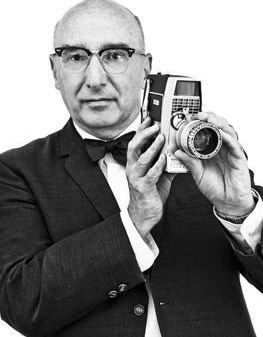
On November 22nd 1963, a historic and tragic event took place. The American President, John F. Kennedy, was assassinated in Dealey Plaza in Dallas, Texas. It was essentially the 9/11 of its time, filled with death, mourning, media outcry, tragedy, and crazy conspiracy theories – albeit on a vastly smaller scale. It also had its own video footage and photographs, and it has been estimated that, out of the alleged 600 people in the plaza that day, 32 of those were photographers. One of those photographers was a dressmaker and an amateur/hobbyist filmmaker named Abraham Zapruder, who unwittingly filmed the incident with his (then) top of the line 8mm movie camera. The footage became infamous and highly sought-after, and Zapruder himself became a reluctant part of history. Ironically there were no radio or television broadcasts during the incident, because the area where the President’s motorcade was travelling was not considered important enough. This is a brief overview of the camera itself – the unsung witness to that tragic event.

Starting from the Top
Zapruder purchased his camera from the Peacock Jewelry Company on Elm St. in 1962 – Serial Number AS13486. It was a top of the line Model 414 PD Bell & Howell Zoomatic Director Series Camera with a Varamat 9-27mm F1.8 lens. It also featured an electric eye (more on that later), a springwind indicator, and speeds of 1, 16 and 48 FPS. He even had a handsome leather carrying case to boot.
It was spool-loaded with double 8mm film and 25 feet could be shot at a time. In fact, the first 25 feet was filled with family scenes, including a grandson digging beside a tree in a backyard patio.

Witness Details
Zapruder’s shiny new toy was a top of the range consumer camera for its time (it was highly rated in the December 1963 issue of Consumer Reports). The “D” designation referred to the “Duel Electric-Eye”. This Electric Eye measured the amount of light the user had at their disposal and it then set the aperture accordingly – from F1.8 to 22. This can also be set manually to get “special exposure effects”.
The Zapruder film was recorded on standard 8 mm Kodachrome II colour safety film, loaded into the main body of the camera. The film could be cleverly loaded like a cartridge and then flipped over when the film finished – much like an 80’s/90’s cassette tape. Batteries or even electricity did not run the camera, instead the camera was wound with a crank and it is advised to do this after every recording (this may remind some people of winding up those good old fashioned disposable cameras from the 90’s that they used to take on holiday).
The camera had the ability to record at three different speeds. The first was single frame (cutely labeled as “Animation”), which according to the manual is “necessary to make an adequate animation scene and can give you many unusual effects”. It even talks about time-lapse being possible – but always remember to use a tripod to get the “best animation results”. The second was labeled as “Run” and the speed was 16 FPS (although Zapruder’s film was clocked at about 18.3 FPS) that was considered the “normal” setting. You can expose 15 feet of film, which is enough for “8 or 9 average length scenes”. The final setting was the 48 FPS slow-motion setting, where you can record “Junior running down the football field, or Susie driving” – but of course the user is advised to always make sure there’s enough light for slow motion movies. The previously mentioned Electric Eye would take care of this and this was combined with the exposure beacon – yellow for proper exposure, red for underexposure, and no light for the adventurous in manual mode.
Zapruder had a 9-27mm telephoto lens (a description which is very much a stretch compared to today) at his disposal when he recorded his infamous film, but it could also be set to wide angle or “normal” (He was approximately 65 feet from the middle of Elm Street where Kennedy was shot). The camera was equipped with a universal focus lock, which allowed the user to keep the focus sharp at various distances. The manual conveniently includes a chart to measure depth of field, with focal lengths, apertures and distances of the subject.
The camera was equipped with an indoor and outdoor filter, which the user would switch depending on what type of film they were using. The user can also set the film speed according to the type of film used (“for faster film speeds, use the setting recommended in the manufacturer’s instructions”).

Aftermath
The original film became one of the most important in American history and though the original 8mm film was copied, recopied (including 16 and 35mm prints) and analyzed ad nauseam, Zapruder never used the original camera again – due to being too traumatized by what he had witnessed. The camera currently resides in the National Archives.
Closing Statement
Even though Zapruder’s camera is obsolete and relatively simple compared to today’s fancy DSLRs, Smartphones and other compact digital wonders, it’s quite surprising how many fairly advanced features were at the user’s disposal. It’s also rather fascinating to think that, if the event took place today (although hopefully not), almost all of the 600 or so people in the plaza would have been filming the event on their smartphones. Although he would probably have disagreed, Abraham Zapruder really was in the right place and at the right time.
The full instruction manual for the camera is available online here, and it’s a fascinating look into the past. Reading the manual’s descriptions and language, it is very clear that this was a camera for the masses. In fact, these cameras were mainly used to silently record kids at play in the bath or in the garden, family birthday parties and lovely summer picnics, rather than politicians being murdered. The manual is also delightfully twee at times, where you almost expect the words “golly” and “gee wiz” to appear. (What is also rather lovely is that the manual explains the concepts of exposure, depth of field and general moviemaking to the user - Something unheard of when you purchase a new camera nowadays….)
This little gadget managed to capture footage from an event that sent shockwaves throughout the world (and damaged the American public’s spirit). The footage it recorded became the most analyzed and debated piece of film footage in history (followed closely by Patterson-Gimlin Bigfoot film of 1967), it was broadcast on television and its stills were printed in Time magazine. The film was deemed "culturally, historically, or aesthetically significant" by the United States Library of Congress and was selected for permanent preservation in the National Film Registry in 1994. That’s not too bad for a hobbyist that only recorded 26.6 seconds, exposing 486 frames at 18.3 FPS and without full HD or 4K technologies.
0 notes
Text
How George Lucas pioneered the use of Digital Video in feature films with the Sony HDW F900

The year is 2002. The Winter Olympics are being held in Salt Lake City, Utah. Queen Elizabeth celebrates her Golden Jubilee; Michael Jackson’s youngest was introduced to the world via a very high balcony, and Michael Barrymore instantly regrets buying his swimming pool. Meanwhile, in Hollywood, a maverick filmmaker shakes the world of cinematography forever.
George Walton Lucas, Jr. Entrepreneurial filmmaker, creator of Star Wars and Indiana Jones, industrial empire builder (and the devil reincarnated, depending on how many Star Wars fans you ask) dropkicked Hollywood into the digital age with the release of Star Wars Episode II: Attack of the Clones – the first major Hollywood blockbuster to be shot 100% digitally. Though not technically the first film to do so (that honor goes to 2001’s Jackpot), it would never the less shake up the cinematography status quo and divide the industry.
Although digital cinematography is no longer a unique concept, with all our Alexas, Dragons and Mark II’s at our disposal, back in 2002 Clones encouraged a trend that we take very much for granted – for better or for worse, depending on your point of view.
Episode II was shot on Sony’s HDW F900 (the “Panavised” version was known as the F900F). It was a collaborative effort started back in 1997 by Sony & Panavision, and would kick-start Sony’s CineAlta camera line – resulting in the F55 and F65 in use today. Lucas had planned to film his entire prequel trilogy using this new gadgetry, but it was unfortunately not ready in time. For 1999’s Star Wars Episode I: The Phantom Menace, George had to make do filming his blue and green screens on good old-fashioned 35mm Arriflex 435E’s and Arriflex 535B’s (plus a digital Sony HDC-750 for good measure). In fact, Episode I would be the last Star Wars movie shot on film until The Force Awakens opens at the end of this year.

The F900, unlike other digital cameras at that time, shot footage at 24P in HD when most – including Phantom Menace’s HDC-750 – would only shoot at 25P or above. It was a 2/3 3-CCD EFP camera, which captured 3:1 compressed 1440 x 1080 component video, recording onto HDCAM tape. Recording was achieved at a 1.78:1 (16:9) aspect ratio, and would be cropped, altered and shoved around a 2.35:1 final release widescreen ratio. Unlike Phantom menace (and 1983’s Return of the Jedi), it was also shot with classic Panavision Primo anamorphic lenses; just as Lucas did on the first two Star Wars movies. It seemed that even when the world of cinematography was changing, some snippets of tradition remained.
This effort to maintain filmmaking tradition was expanded to the crew and work practices on set as well. Fred Meyers (the go-to HD engineer at ILM) was not only in charge of making sure the new digital workflow ran smoothly, but also worked with Lucas to maintain all the traditional feature film roles – and eliminate any “culture shocks” the crew might experience. Although new roles were added to the mix – a digital camera engineer, someone to maintain the monitoring and recording equipment (DIT anyone?)– The traditional roles were kept the same; there was still a DP, some assistants, operators etc. Meyers even kept much of these new roles hidden off set, so the look and feel of the set didn’t feel “broadcasty”.

Whilst keeping an amicable foot firmly in on-set tradition, and despite the push towards the eventual digital revolution, Lucas had yet to convince everyone. His efforts to replace traditional film theatre projectors with flashy new digital equipment failed to catch on – at least initially. The master image was less than 1920x1080, and was recorded with letterbox; this meant that unfortunately, as is the case with digital masters in general, 1440x1080 would remain 1440x1080 until the end of time. Of course there still were (and still are) the celluloid faithful – with directors such as Quentin Tarantino, Steven Spielberg and Christopher Nolan, and cinematographers such as Dan Mindel, Wally Pfister and Janusz Kaminski arguing the superiority of the film format (dynamic range, detail, and set discipline are just a few examples); and expressing reluctance to embrace a digital future.
On the other side of the battlefield, however, are the filmmakers who took a leaf from Lucas’s big book of 1’s and 0’s. Cinematographers such as Anthony Dod Mantle (who won the first Oscar for best Cinematography for a digital feature) have migrated to the digital realm. Martin Scorsese, who ironically created The Film Foundation, also made the switch and his 2013 feature The Wolf of Wall Street became the first to not produce a 35mm print for cinemas. James Cameron would go on to utilize the Sony CineAlta HDC-F950 for his 2009 3D-fest Avatar, and remain a digital advocate to this day. Other examples are the Oscar winning cinematographer Roger Deakins and New Zealand film giant Peter Jackson.
Lucas was not the first to utilize digital camera technology in films. He was not part of the Danish Dogme 95 movement in the 90’s, and Episode II was not the first film made digitally. His contribution was to make the Hollywood system take digital seriously. When he boldly abandoned the film format, some filmmakers questioned digital’s advantages over celluloid and its place in the industry. Other filmmakers saw opportunities the format could achieve and rolled with it.

The merits and comparisons to film will most likely still be debated even if the film format eventually disappears. Some will prefer one or the other; some will enjoy the benefits of both. Ultimately it’s the work that filmmakers do with the technology at their disposal that’s important. Cinematographer Janusz Kaminski sums this up when he once said “I think there is more to cinematography than talking about cameras and film stock. It's like talking to a costume designer about what kind of sewing machine they use.”
Whilst digital revolution has very much arrived, it has not quite conquered the industry just yet. Meanwhile Star Wars: The Force Awakens, shot on 35mm, opens later this year….
2 notes
·
View notes
Text
BMW at Anglesey Circuit - Minicams and Sound

Shoot HD was recently involved in the production of promotional films by Juice for two of BMW’s latest and fastest cars, the Concept M4 GTS and M2 Coupé. ‘M’ stands for ‘Motorsport’ so three days at the picturesque but wickedly twisty Anglesey Circuit on the coast of the Welsh island with two Driving Wizards meant plenty of speed and plenty of noise, to be captured with an array of camera set ups and sound recording techniques.
The principal footage was shot by DOP Robert Shacklady on ARRI AMIRA, including tracking shots on a jib arm from a tracking vehicle, up and past trackside shots and statics. Aerial material was captured with a Panasonic GH4 on a drone piloted by Ben Kenobi of Rogue State Media. Shoot HD was responsible for the chase car tracking shots of the M2, the on-car minicam shots for both films and the sound recording of the cars.
Minicams
GoPro HERO4 cameras were rigged with suction cup mounts on both the M4 and M2 for laps to capture mainly product badges and the wheels, showing up close the smoke generated by the screeching tyres.
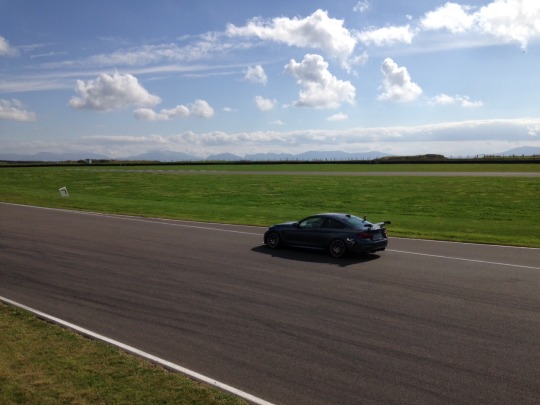
Tracking Car Rig
A BMW M3 was supplied for use as a chase car for close up, high-speed tracking shots of the M2 on the circuit. The main camera, a Canon 5D Mark III, was rigged forward facing on the front of the M3, as low as possible to maximise the feel of speed. A wide-angle zoom lens at 16mm f2.8 was used, protected by a screw-in filter. GoPros were placed at other points around the car to cover other angles as the tracking car moved around the M2.

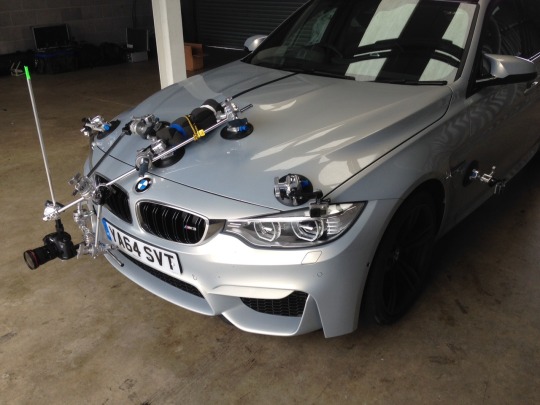
Sound Recording
Employing techniques commonly used in car video game sound production, a range of sounds were captured from various perspectives to give the post-production sound mixer a rich base of accurate audio of both cars, from which to build the films’ soundtracks. In order to convey the immense power of these machines, it was necessary not only to obtain exterior sounds but get right onto the cars to close mic the two main sources of sound, the engines and exhausts.
A range of specialist high SPL (sound pressure level) lavalier and dynamic mics were rigged in the engine bays and close to the exhaust pipes, strategically to minimise wind noise while capturing the intended sounds cleanly. A few sound laps were completed with each car to record all the types of movement, including plenty of drifting to get those screeching sounds (and turn the soundman green). Exterior car sounds were captured using shotgun mics during filming of up and past shots, and other sound effects and general atmos were recorded with a stereo mic array.
TopGear.com seemed to like the sound of the M4…
http://www.topgear.com/car-news/video/video-heres-what-bmw-m4-gts-sounds
Shoot HD can offer experienced sound recordists and minicam operators complete with competitive kit packages for your next car shoot or any other production.
Watch the completed films:
youtube
youtube
0 notes
Text
Big News For The Small Minded

Your new camera’s arrived!
Shoot HD have just taken delivery of your new camera and it's ready for you to collect for your next shoot. Compact, lightweight and self-contained, the Alexa Mini is the new versatile, up to 4k shooting solution. The Mini perfectly complements Shoot HD's Arri camera shooting kits, eliminating the complications of working with third-party cameras and keeping everything within a single workflow system.
The Alexa Mini
Compact and light enough to hold at arm’s length, the Alexa Mini is ideal for tight shooting conditions and perfectly suited for use with the Shoot HD Ronin rigs. With its swift set-up time and ergonomic usability, the Alexa Mini and Ronin combination is a match made in movie heaven. Great shots are practically guaranteed.
Lens Choice
DOP's appreciate the Mini’s interchangeable lens mount which can be switched with any Amira/Alexa compatible mounts, allowing the use of the wide range of EF mount lenses as well as the wide range of Shoot HD PL prime and zoom lenses.

Above: The stunning EF Canon CN E Cinema Primes
Expanding Your Horizons
Equipped with a 4:3 sensor means you can also choose to shoot anamorphic on the Mini. In fact we’ve already mounted our brand new Alexa Mini with a classic set of Kowa anamorphics (see below). It’s a stunning combination. We expect Arri to release the Anamorphic and RAW software update this Autumn.
Complete the Picture
The Mini's modular design means that you can build it up into traditional camera mode for shoulder or tripod shooting. Equipped with a revolutionary multi-viewfinder it makes life incredibly easy for single-operator users as well as compact crews.

Above: The Alexa Mini makes for a great great handheld camera. The above configuration with 35mm Ultra Prime weighs in at just 8.6kg.
Time Saving
With the Mini, no extra time need be spent on set rigging any third party cameras and with frame rates up to 200fps, the Mini delivers slow motion cinematography, doing away with the need for a dedicated high-speed camera set-up.

Better & Better
Choosing to source kit through Shoot HD makes sense for the discerning DOP who demands equipment that's prepared with all the professionalism, precision and care our technicians take.
We actively encourage our clients to come and familiarise themselves with great new kit like the Mini and Amira 4k well in advance of their shoot. Just like the free technical advice and excellent rates, it's all part of the Shoot HD hire experience.
Hands On
Itching to get your hands on the Mini or get your eye in with our great range of lenses?Just give us a call and we'll get the kit out and put the kettle on and brew you a cuppa (see below).

Call us now on 01753 651440

0 notes
Text
BMW i3 shot to pieces
An immaculate BMW i3 has been shot to within an inch of it’s life - we can report. In a quiet Bath City backwater, DOP Robert Shacklady lined up the perfectly innocent little car in the sights of a Shoot HD 17-120mm Canon lens and then repeatedly pressed the trigger on an Arri Amira. Some of his best shots came when he deployed the Ronford-Baker 4ft slider as he mercilessly raked the vehicle with one shot after another.

Above: a ‘manic’ Shacklady locked, loaded and ready to roll.
“I couldn’t believe what I was seeing” reported eye-witness Robert Momber (23) “the more he shot the more he was grinning as if he just didn’t care”. Momber, who is now recovering from his ordeal in a nearby hostelry, captured some of the shooting on a Go-pro Hero 4 and we hope to bring you some of the actual footage as soon as it is cleared for public consumption.
Also present at the scene was Paul Hellard (38), a professional Sound Recordist and owner of Shoot HD at Pinewood Film Studios which supplies high-end camera kit to the film & Television industry. “It was breathtaking” said Hellard “the camera is completely silent so we had no idea he was shooting until we heard his (Shacklady) manic laughter and we turned around to witness him re-loading”. Mr Hellard is also now recovering in a nearby hostelry.
More as it comes in...
1 note
·
View note
Text
STOP TALKING 4K

It’s time to stop talking 4k Amira...
...and start shooting 4K Amira!
Yes Shoot HD now has the 4k Amira available for your next shoot. At last we can all stop talking about it and actually start shooting fabulous 4K on one of the most robust, flexible and drop dead gorgeous cameras we’ve seen for years.

Multi-format
Our 4k Amiras can now record all ProRes codecs in Ultra High Definition 3840 x 2160 resolution directly onto the in-camera CFast 2.0 cards. So for productions with a UHD workflow all the way through to distribution, and those astute enough to future-proof their productions with 4k, the answer lies in hiring Shoot HD Amira 4k.
Feature film sensor – Documentary film sense
The amazing Alexa sensor that’s used in the Amira yielded the outstanding images featured in the 4K theatrical releases of movies like Gravity and Maleficent. Yet if you’re about to produce a fast turn-around TV doc on a tight budget, the very same camera makes perfect sense with its ability to record ProRes 422, 422HQ or 12 bit 4444. The perfect formats for time-pressured TV productions.
Box Clever
Our Amiras come ready to roll straight out of the box

Fully fitted flight case
PL or EF Amira kit
19mm bridge plate & bar
15mm bridge plate & bars
Shoulder pad
Dovetail plate
24v battery cable
MHB-2 Mic holder & top mic
Rain Cover
6 x V-Lock IDX battery kit
Moose bars
3 x 120GB Pro Cfast cards
Cfast card reader
VCT-14 base plate
Spare HDMI viewfinder cable
Your choice of lenses
4k Amira Booking Hotline now open: 01753 651440
email: [email protected]

0 notes
Text
Shoot HD @ NAB

No prizes for guessing where Shoot HD have landed up this week - that’s right, under the Eiffel Tower in Las Vegas, where else could we go but NAB to get a first look on your behalf of all the latest cameras, lenses and shooting kit. You can rely on us to order up all the best bits and have it available for you guys to hire just as fast as we can.
SEEING RED
RED WEAPON

We make a point of ensuring our Shoot HD RED cameras are bang up to date, so we’ll be checking out RED WEAPON™ (above) the latest digital camera to be added to the RED DRAGON family that combines optimal color science and dynamic range of the 19 megapixel RED DRAGON® sensor.
4K CRACKERS
ARRI ALEXA MINI
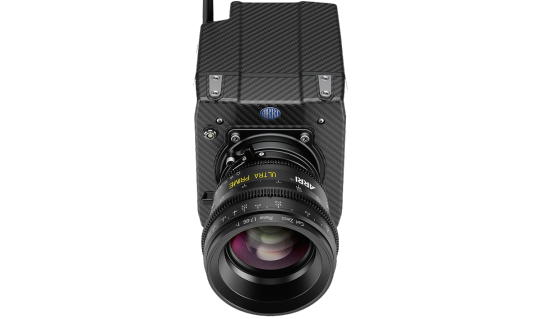
We’ll be looking to complement the Shoot HD 4k AMIRA line up with the new ARRI ALEXA MINI (above). Compact, lightweight and self-contained. Crews will find that the ALEXA Mini perfectly complements their shooting kit, eliminating the complications of working with third-party cameras for specialized shots and keeping everything within a single system that is trusted all over the world.
CANON C300 MK11

Of course Shoot HD are at NAB to see the CANON 4K EOS C300 Mark II cinema EOS camcorder (above) unveiled. It features a new 9.84 megapixel Super 35mm CMOS image sensor that offers a maximum ISO of 102,400 and 15 stops of dynamic range.
We’ll also be looking at some fun stuff like the the World’s smallest HD monitor (below) from British company High Performance Media Technology.
HI-DEF ADAM
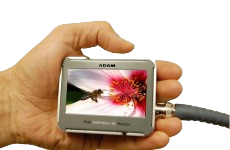
Stay tuned for more as it comes in...
0 notes
Text
Epic story, Epic camera...

The BBC is to screen The Gospel of John this Easter. Filmed by Shoot HD DOP Ben Hodgson, it’s scheduled to be shown as three one-hour features from Good Friday morning and on Netflix from April 7th. Ben chose to shoot Red 4k with Zeiss lenses.
Epic choice
The initial format decision was taken when the project started in early 2010. A lot has happened with cameras since and opting for the then relatively new Red 4k proved to be a wise future-proofing decision at a time when other realistic camera options comprised Arri’s D21, the Silicon Imaging Si 2K, Super 35mm, Super 16mm and HD/pro-35 tape formats.
Trans Atlas
Having a complete shooting package that could deliver cameras and lenses as well as pulling together transcoding and offer production immediate 2k playback review was also a key requirement. A fully kitted out, air conditioned Love Film camera/wrangling vehicle travelled overland from the UK, over the Atlas mountains to Quazazarte Film Studios, Morocco.
All Your Shoot Needs
It's kit combinations just like this that Shoot HD specialise in. Whether it’s a single camera kit, or you need all the lights, grip and DIT kit too, we’ll make sure that it all comes together in the right place and at the right price. The Shoot HD team work with DOP's, Production Managers & Directors, building shoot specific packages.

0 notes
Text
Film Kit Review: Ronford-Baker 4ft Slider
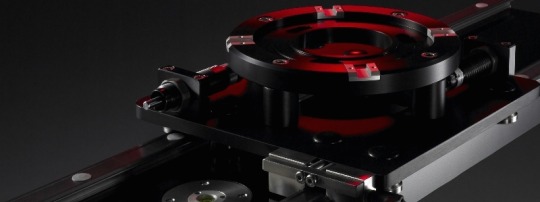
We love to supply shooting kit that in some way reflects the Shoot HD ethos, and Ronford-Baker’s 4ft Slider is a great example: kit that's well put together, will never let you down and always gives you great pictures.
If you’ve ever visited the Ronford workshop you’ll know it’s always buzzing and whirring as they engineer great solutions for their clients. Solutions that we in turn like to pass on to you.
Putting Great Kit Together
Our 4ft slider is proving to be a perfect fit for our 6k Red Dragon, Arri Amira and lightweight cameras. It’s well suited for working off a tripod, down & dirty on the ground and it’s a sucker for car bonnets. Robust with a swift set-up time and a smooth, silent action – and great value.
‘Working hard to put great kit together’ - See for yourself how Ronford-Baker hand-crafted the Shoot HD4ft Slider with Ronford's Jeff Lawrence (below).
youtube
Call us & arrange a demo on 01753 651440

1 note
·
View note
Text
How smart PM's stretch their camera budgets #7...

The Arri Amira (above) has rapidly become the most requested hire camera
Some Production Managers are finding smart ways to make their camera rental budgets go further...
It's often up to the Production Manager to source the Arri Amira camera for a shoot and there’s more than one way to go about it. Some PM's might decide to leave it all to the Director Of Photography - trusting them to supply only what’s required for the shoot. Others might punch ‘cheapest Amira hire’ into a search engine whereas other Production Managers will choose to capitalise on the business relationships they've cultivated with Camera Facilities Companies by turning to a tried and tested supplier. Each route has it’s own merits - some have pitfalls.
Leaving it to the DOP to decide what’s needed in the kit is a good place to start. They’ll be more than happy to get the best deal they can on your behalf or, if they come with their own kit you may be incentivised to use that over other available solutions.
Googling ‘cheapest Amira hire’ - or getting hire companies to bid against each other by soliciting multiple quotes is another route some Production Managers take. This can take a while and it’s unlikely you’ll ever get an exact ‘like for like’ comparison as kit components always vary. Some Productions have been caught out when the cheapest kit available to rent turns up on set.
Turn to your trusted Camera Hire Company
Calling up their trusted Camera Hire Company is how most experienced PM’s keep within budget, ensure they only pay for what their production actually needs and guarantee their shoots run smoothly. Asking your Camera Hire Company and DOP to liaise is good practice - they speak the same language, will have your best interests at heart and can save you time and money. Building a relationship with a Facilities Company who place as much value on their service levels as they do on their camera kits will serve Production Managers well. The best Hire Companies place a high value on establishing a good rapport with PM's.

Above: Shoot HD supplied Gate Films with Canon CN-E Cine EF prime lenses
"We shot in England, Scotland and Wales and the lenses were really the stars of the shoot! I can say that one of the DOP's we used commented that he was awestruck at getting to use them". K Hulsey PM Gate Films

Above: A Shoot HD Arri Amira Hire Camera with EF lens Mount
PM's Demand High Service Levels
These days Production Managers expect their facilities company to offer them plenty of free advice and kit options. Not all PM's are tech-heads so it's worth searching out a facilities company who are experienced, easy to talk with, don't blind you with science and who you can always trust to give you a competitive rate without you having to constantly double-check it.
Getting Creative
Creativity starts on a spreadsheet. Hiring an Amira camera body at an unbeatable price may seem like the obvious way to go but are you about to pay even more than the price of the camera for the lenses? Quite Probably and possibly with good reason, but Shoot HD now offer the option to supply Amira cameras with Canon EF mount prime lenses instead of default PL mount primes. This alone can save hundreds of pounds a day and may be a creative route your Director and DOP will be happy to take. This is just one smart way for Production Managers to raise production values without breaking the budget and it's a logical move for productions that have been shooting on cameras like Canon's C300.

DOP's may opt to stay with PL primes or Canon's 17-120mm servo zoom (above)
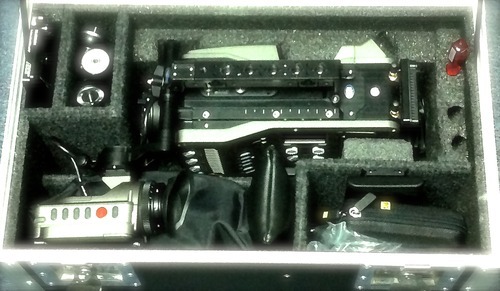
Above: A Shoot HD Amira EF camera kit prepped & ready to ship to set
What's in the box:
Box contents: Arri Amira Camera body, handle, viewfinder with cable (HDMI mini), V-lock battery adapter, EF lens mount, wedge plate adapter for 15mm with shoulder pad, 8GB memory stick, microphone mount with White Noise bracket, Viewfinder cable spare (HDMI mini), 24V 3-pin XLR Amira battery cable, 15mm bars, Allen key 3,0x75 (red handle), 3 x C-fast 2.0 card 120GB, C-fast 2.0 card reader (USB3) with USB cable, bridge plate adapter for 15mm with shoulder pad, Bridge plate for 19mm, Dovetail plate, 19mm bar (440mm), Moose bars, microphone (foam gag, deadcat, mount, cable, case), rain cover, base plate, 6 x IDX batteries, charger, flight case.
01753 651440 is the Magic Number
Production Managers are only ever one phone call away from good advice and great prices. A call to Shoot HD will put you in touch with experienced technicians, DOP’s and Sound Recordists - here to make sure you get the kit you need at the price you can afford - and don't forget to ask about free delivery!
vine
0 notes
Text
Unwrapping Christmas for Shoot HD hirers
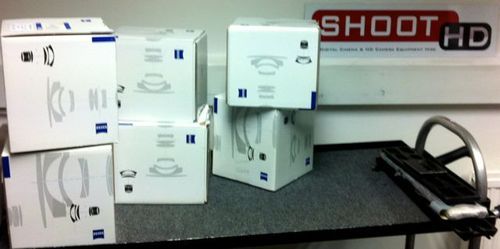
Christmas has come early this year for Shoot HD camera rental customers with the arrival of a set of sparkling Zeiss Ultra Prime lenses. Now bench-tested and flight cased they're all ready for our hirers to create some more stunning images with.

Compact, with crisp focus, great contrast, colour saturation and with a T1.9 rating these PL mount lenses will sustain their superior image quality at close focus across the the whole Super 35 frame.
Shoot HD offers a set of six lenses including the 16mm & 135mm, or a set of four comprising 24mm, 32mm, 50mm and 85mm.
Arri Zeiss Ultra Prime Lens Hire/Rental London, UK
0 notes
